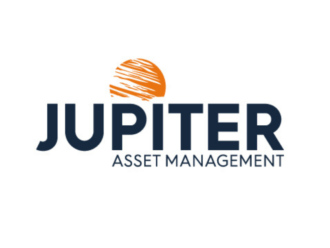Sam Livingstone, head of data science at Jupiter, explains why a highly devel- oped data analytics capability is essen- tial to ESG investing.
Most fund management companies have by now realised the importance of ESG and sustainable investing. We believe one of the ways Jupiter differs is in the depth and agility of our ESG data analysis.
Recognising the importance of data analytics to empower fund managers in their ESG decisions, early on we took the deci- sion to build rather than to buy. Instead of acquiring ESG data off-the-shelf via a third-party tool or platform, we decided to build our own customised solution. This allows us to add new data feeds as and when we want, including proprietary data. It enables us to be agile, allowing our fund managers to have input into how the data is analysed and presented. We do not need to rely on other asset managers having the same ideas and therefore requesting the same features.
I acknowledge that off-the-shelf ESG data solutions have their place, but they may not always fit every fund manager’s cover- age, strategy or style. Off-the-shelf ESG data solutions are not particularly nimble, whereas we often release development updates to our customised solutions sev- eral times a week. We are able to swiftly provide our fund managers with fresh lenses through which to view the data. This means the forensic approach to data due diligence can be extended each time an enhancement or feature is added.
Close relationships
Third-party ESG provisions do not have the same level of transparency as in-house built solutions. Data science is mostly about data cleansing, feature engineer- ing, building data pipelines and checking that all the data flowing through the systems are pure (or at least, purified). Taking a third-party solution usually means being reliant on another company to do the data cleansing. Being able to examine the data ourselves enables us to achieve a higher probability of accuracy. It also means we can spot when the purity is changing and react quicker.
We have built close, direct partnerships with many data vendors. One of them, for example, can provide direct access to about 6,000 factors yet makes less than 1,000 of them available via third-party tools. By working closely with the data vendors, we have been able to increase the richness of our data content (and extend some benefits to the wider ESG community).
Building an in-house ESG data solution requires a strong in-house data science and engineering team. In 2020, Jupiter’s data science team loaded more than 100 billion rows of data. (For context, the spreadsheet programme Excel can only handle about 1 million rows.)
In one project alone, we were able to load a 12 billion row dataset in about one hour, by using the right technology, which in this case was Snowflake.
I believe that talent, tech and data are the three keys to success in data science. Get- ting the right people, the most suitable technology, and the best data sets, then tying them together leads to the highest probability of success. No one area alone can carry a team.
The path to knowledge
More is not always better. To be useful, data must be understood and turned into knowledge. We devote a lot of time to the first (and least glamourous) part of the process, cleansing the data. Only after we have explored the data and are confident of quality and robustness do we move along the path in the diagram below.
It is a mistake to try to jump straight from data to wisdom.
Complexity increases exponentially, and so it is vital to get the early stages right. Next, one can surface insights by processes as simple as basic aggregations or dashboards. Only then do we move on to more complex elements, starting with traditional econometric models and pro- gressing to more advanced machine learning methods.
ESG Hub
One of the products we have developed is ESG Hub. This started from our asking fund managers, ‘How can we make it eas- ier for you to analyse and integrate ESG data?’ ESG Hub is an analytics tool made available via web-app. It is designed to slice and dice ESG data and firm holdings in several ways, including fund manager view, analyst view, and risk view. Our fund managers find it a useful tool in consider- ing and interrogating ESG data. The tool continues to evolve with more datasets and features being added.





